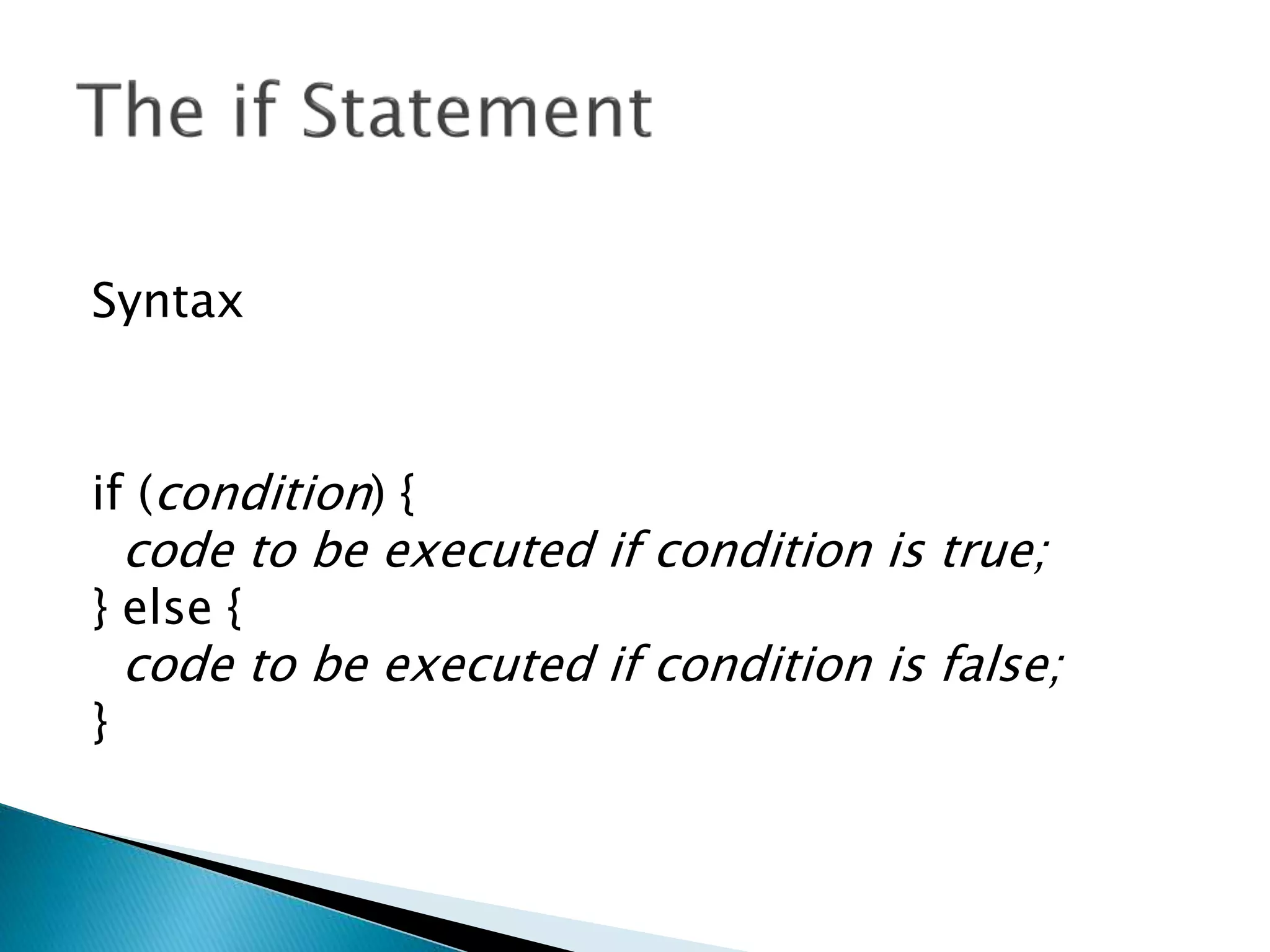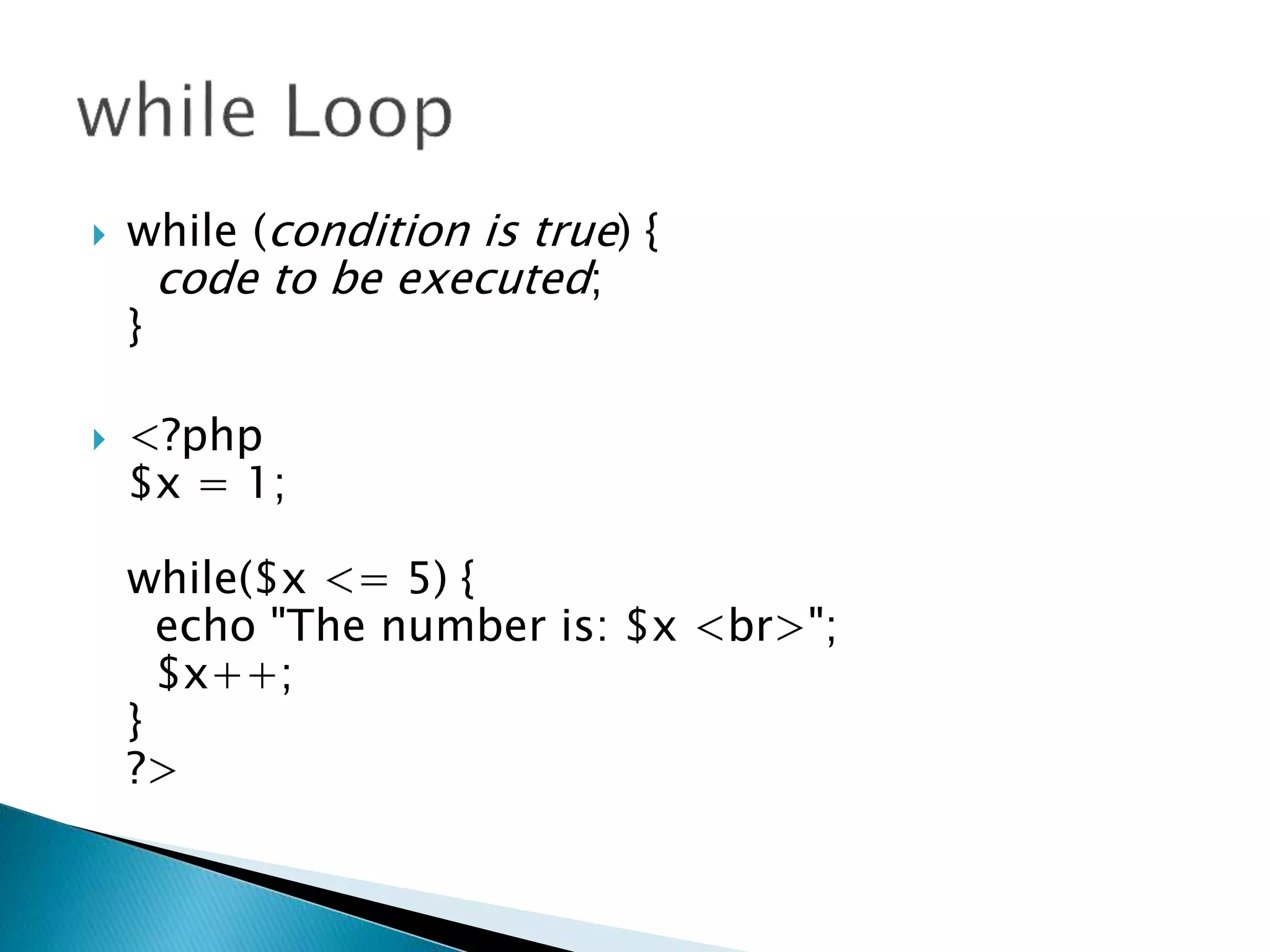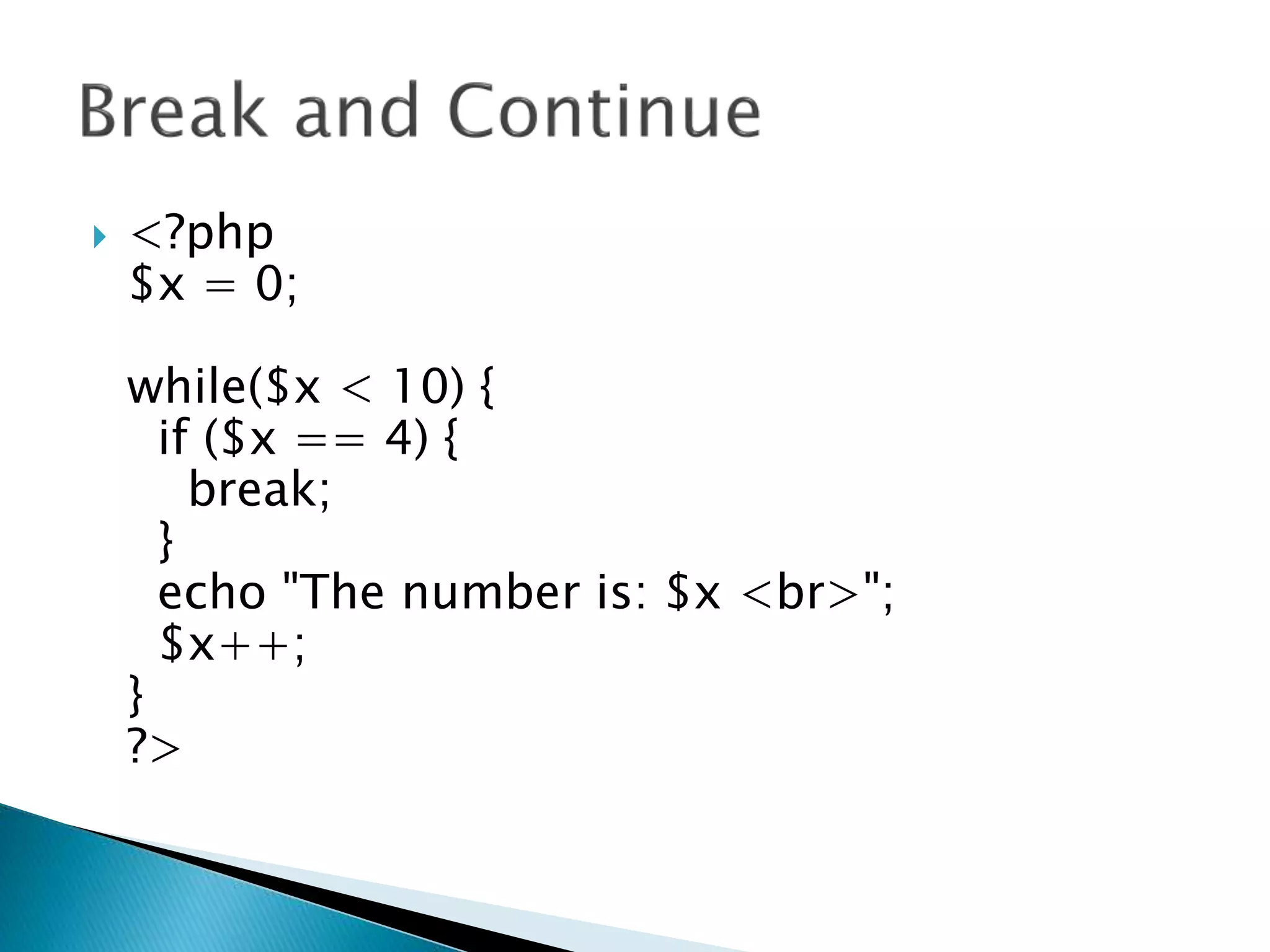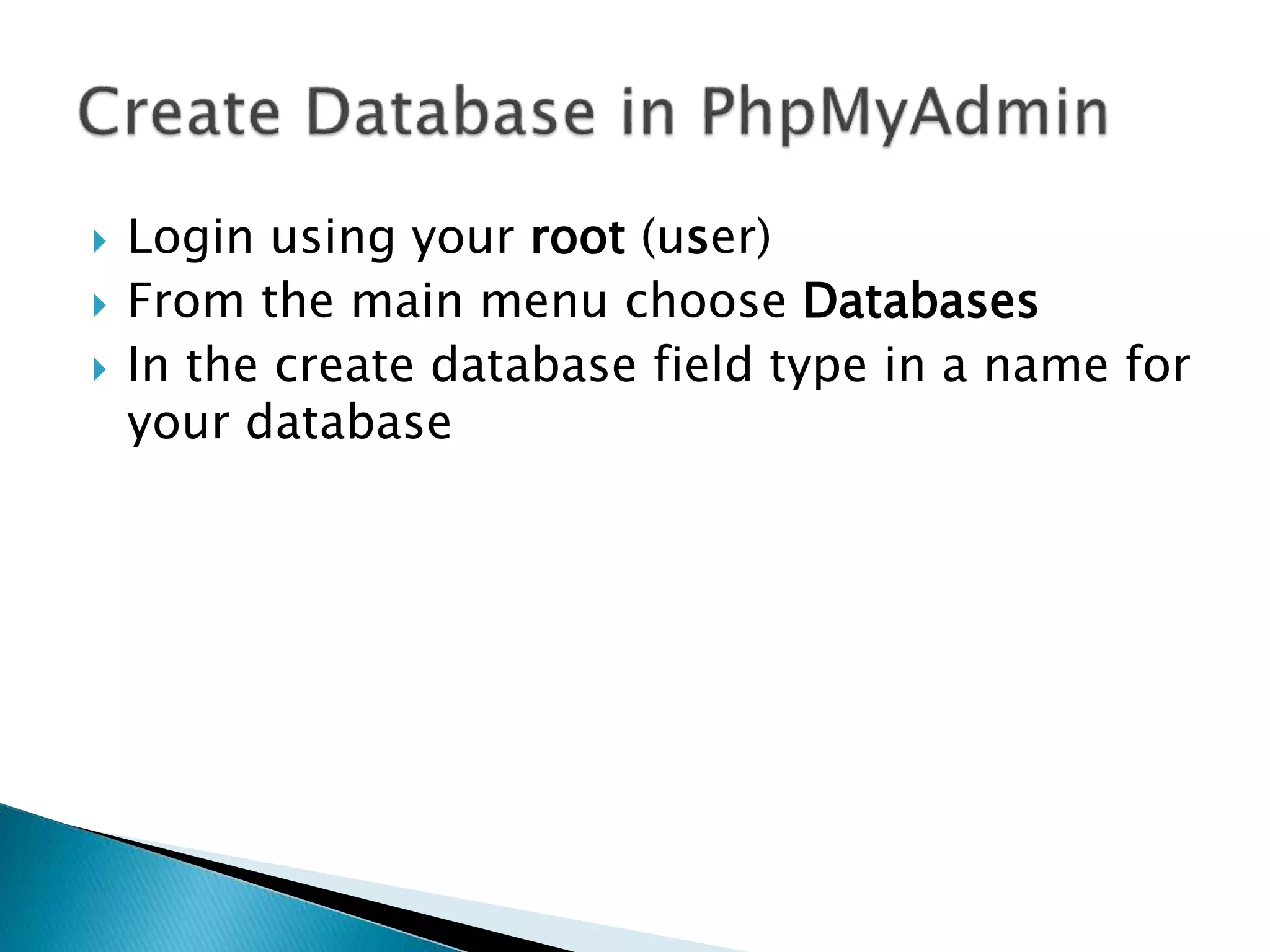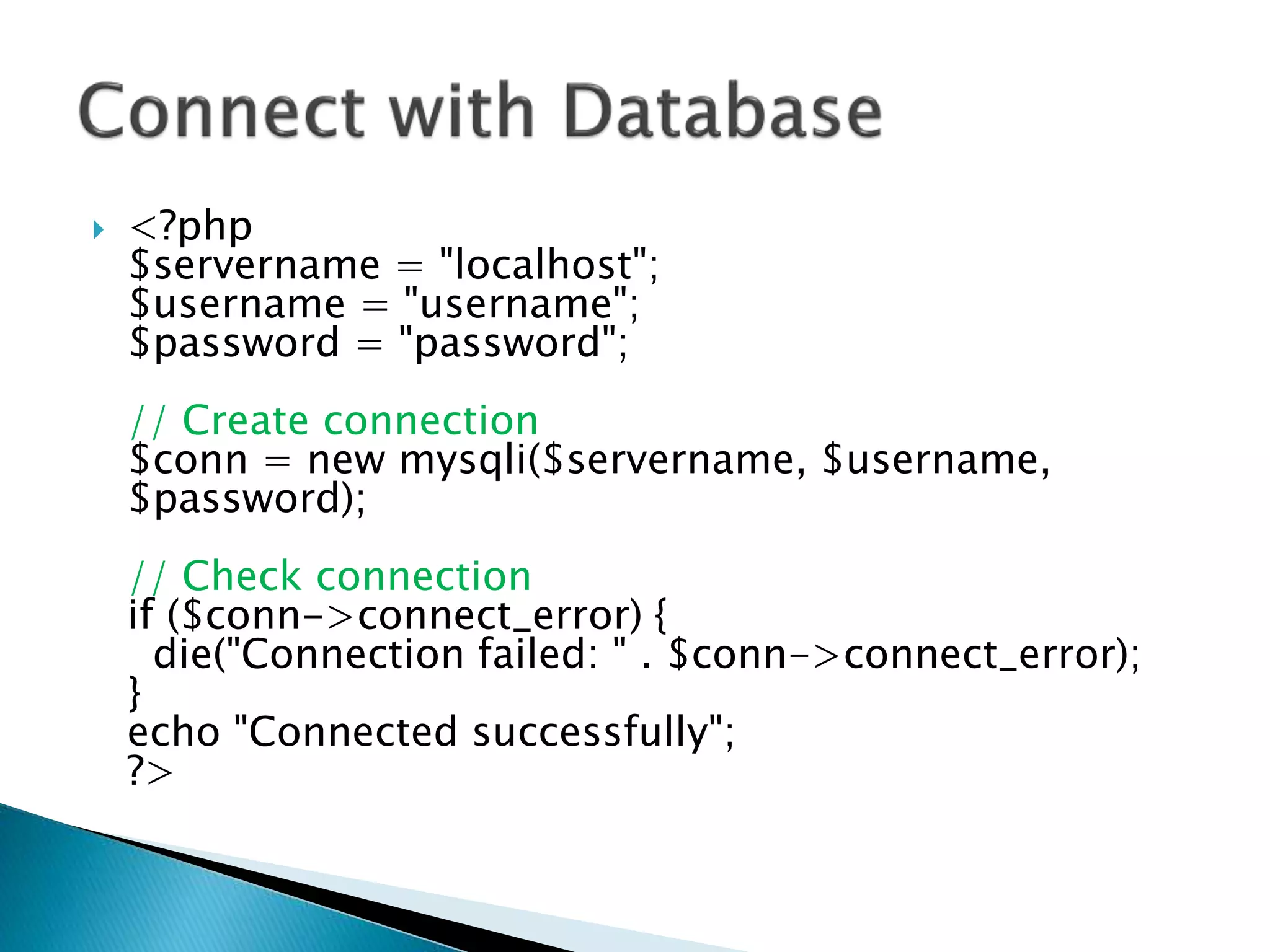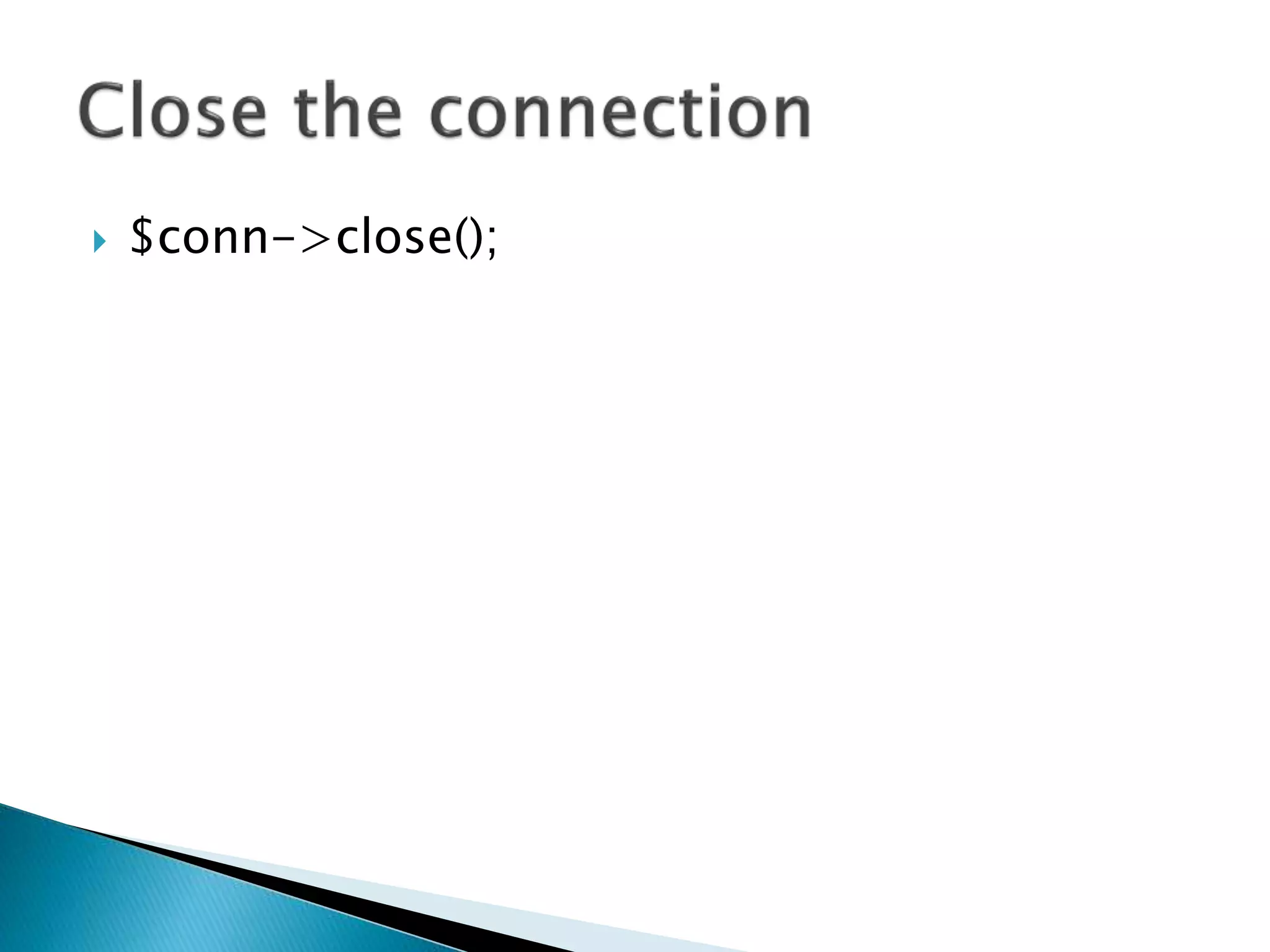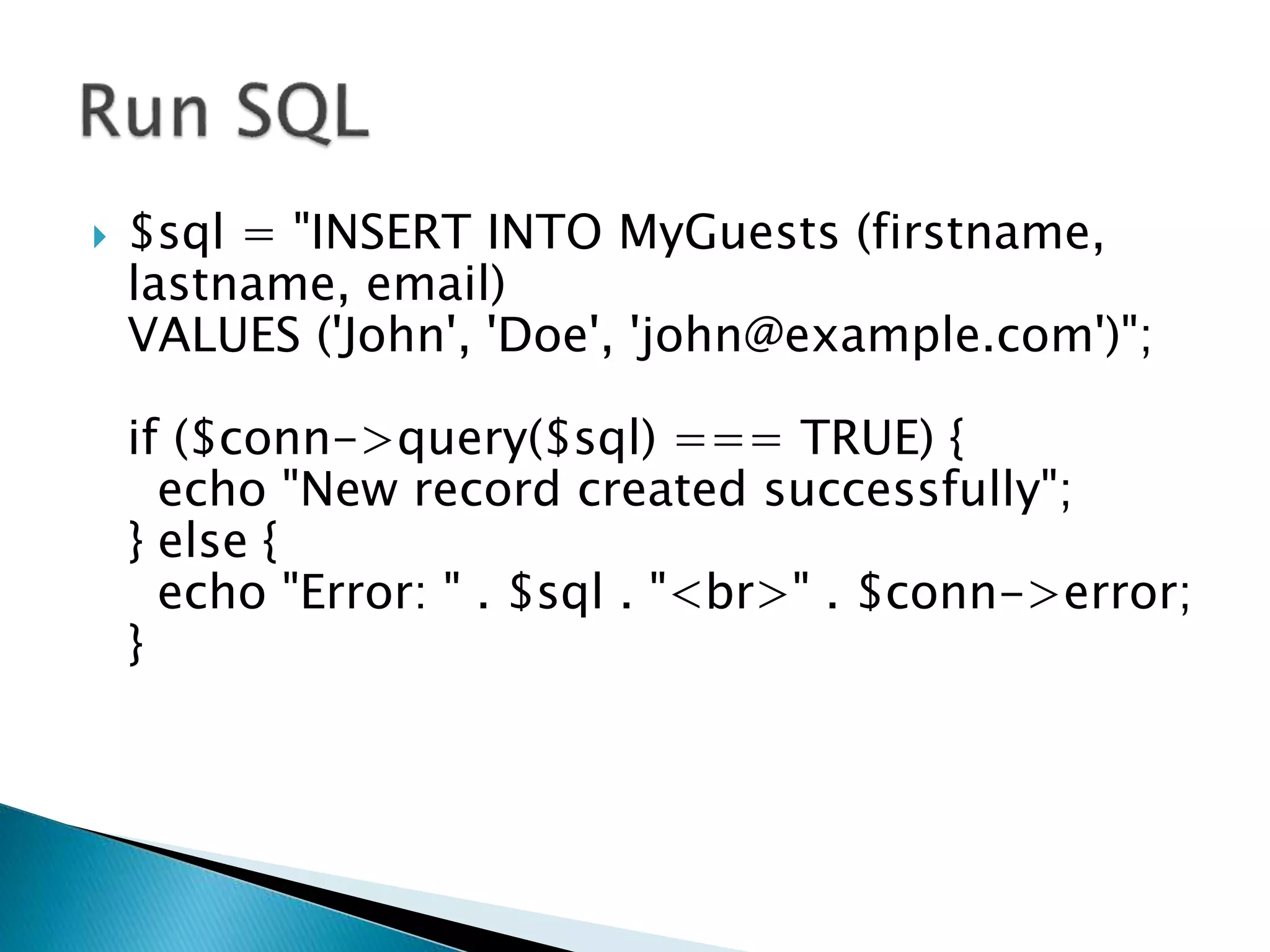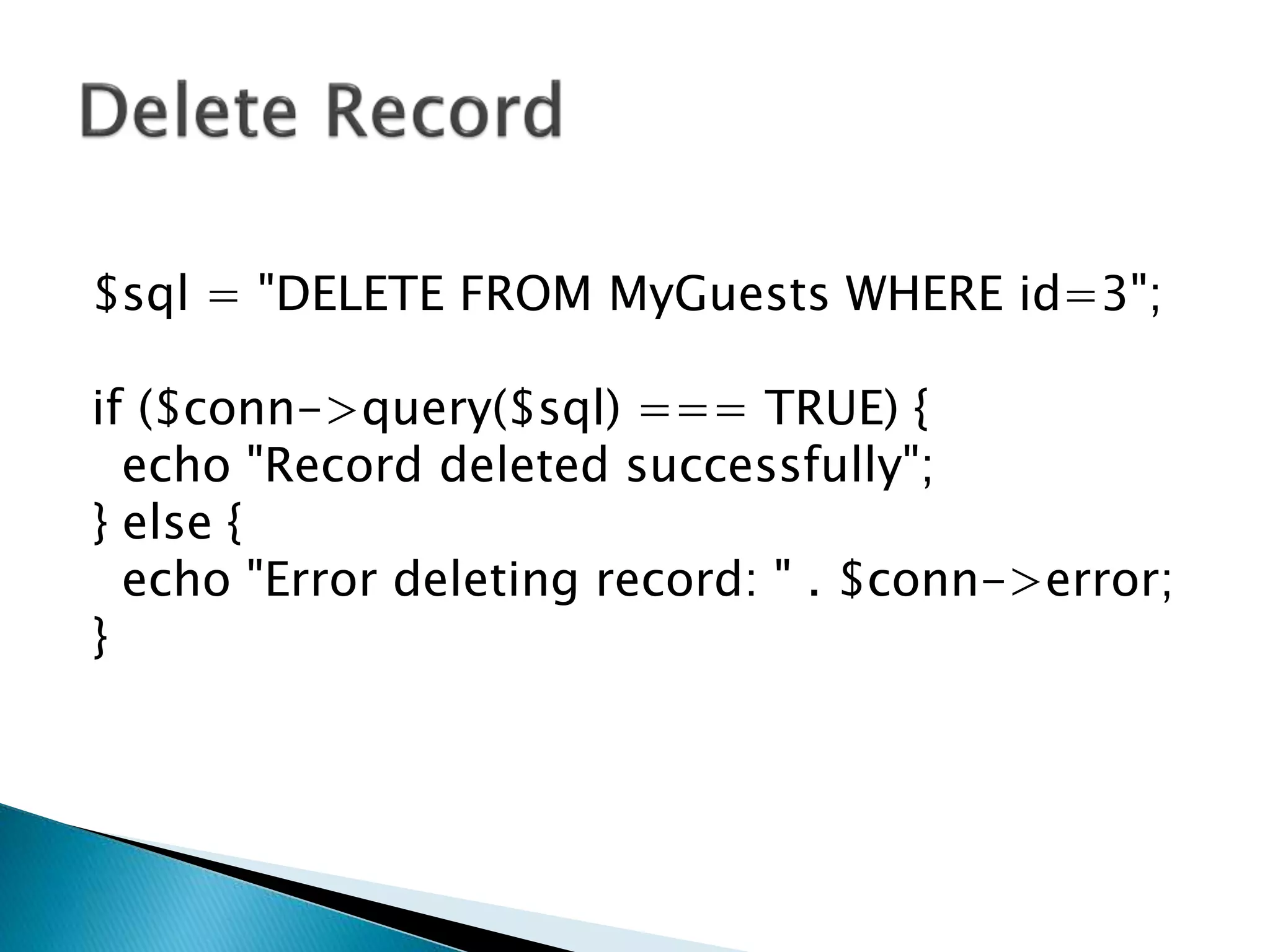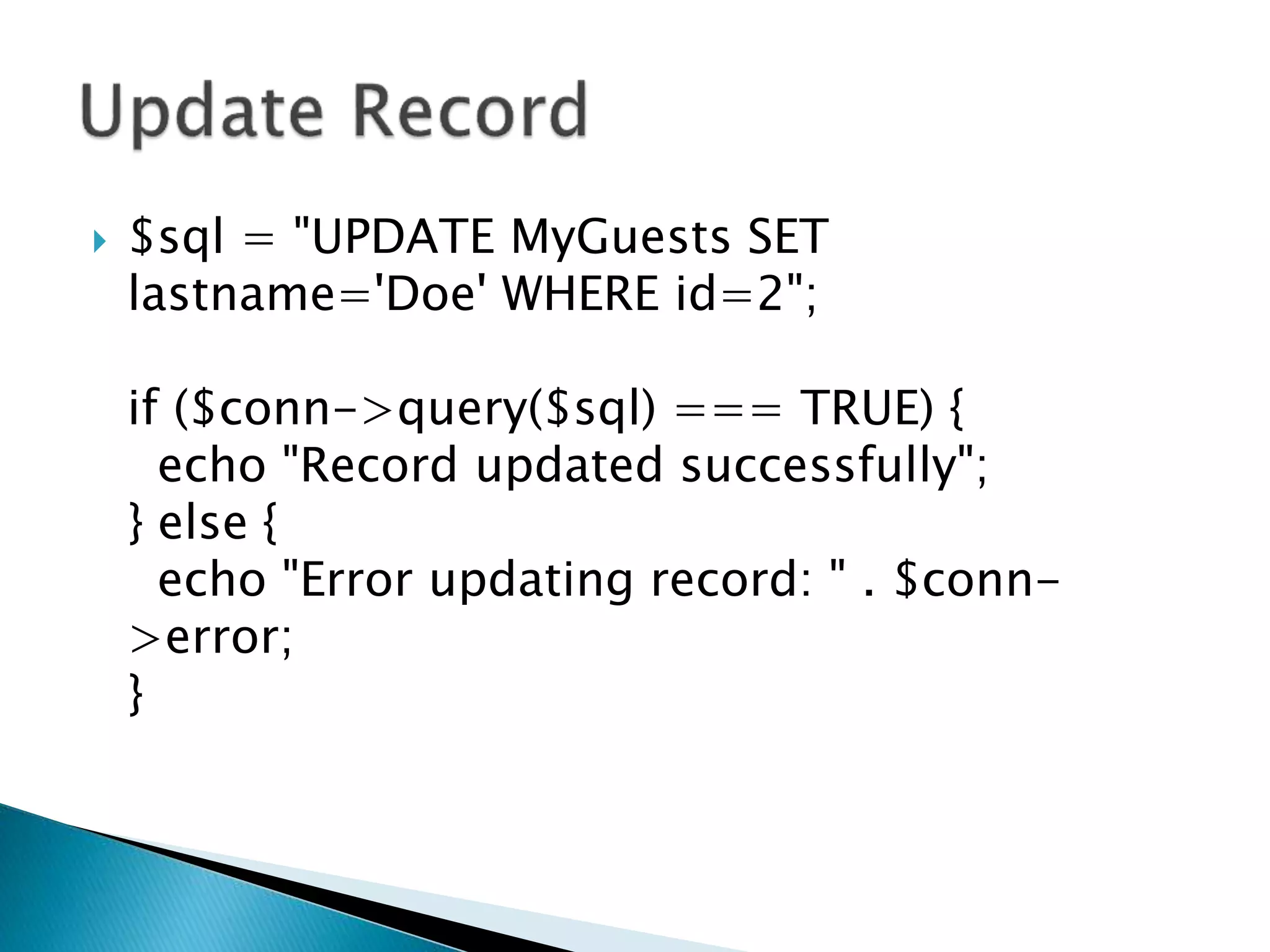This document provides an overview of basic PHP concepts including variables, data types, constants, arrays, conditional statements, loops, connecting to databases, and performing basic CRUD operations. Key points covered include variable naming conventions, escape sequences, defining constants, looping with while, and connecting to MySQL to insert, delete, and update data.




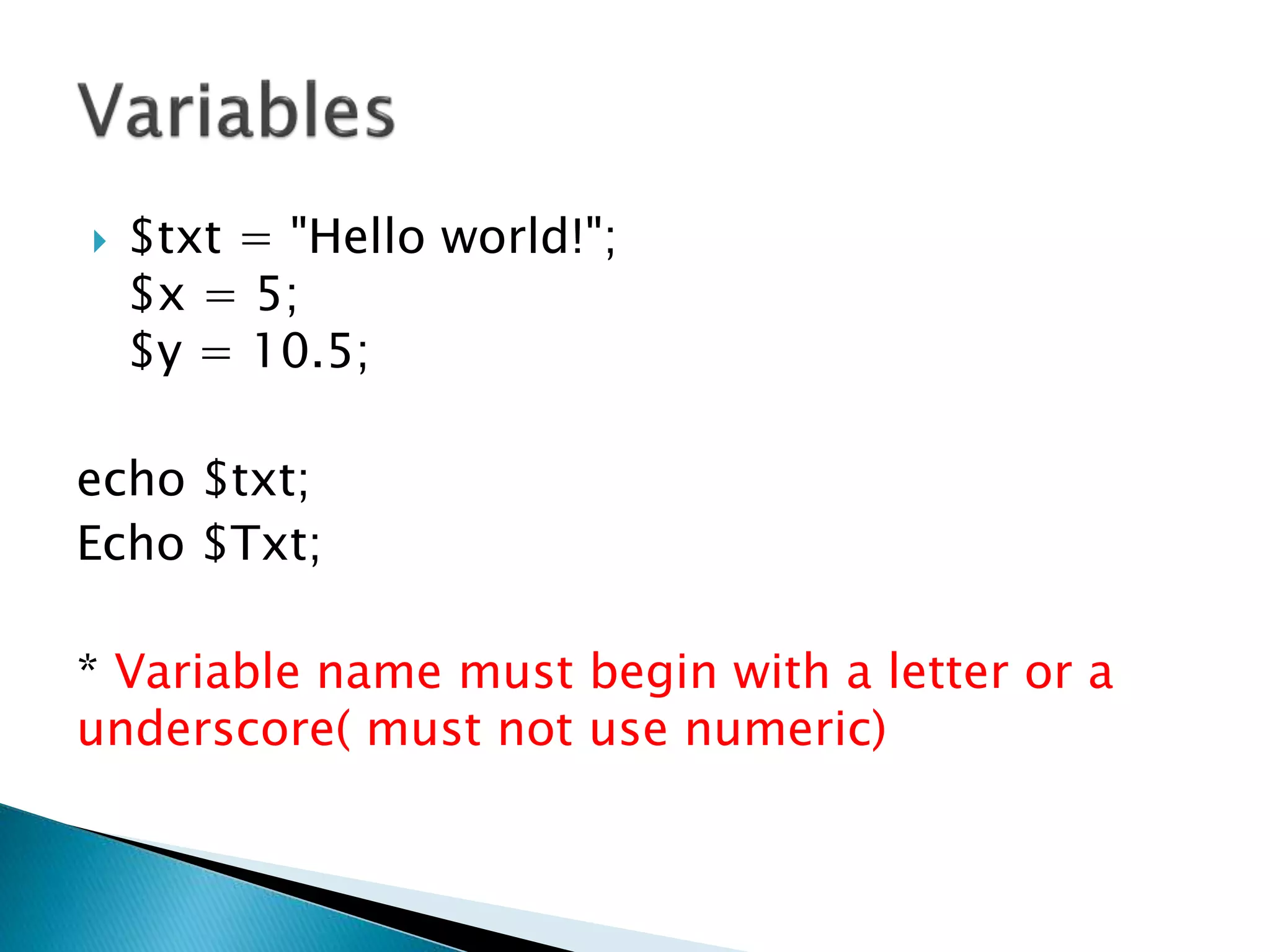

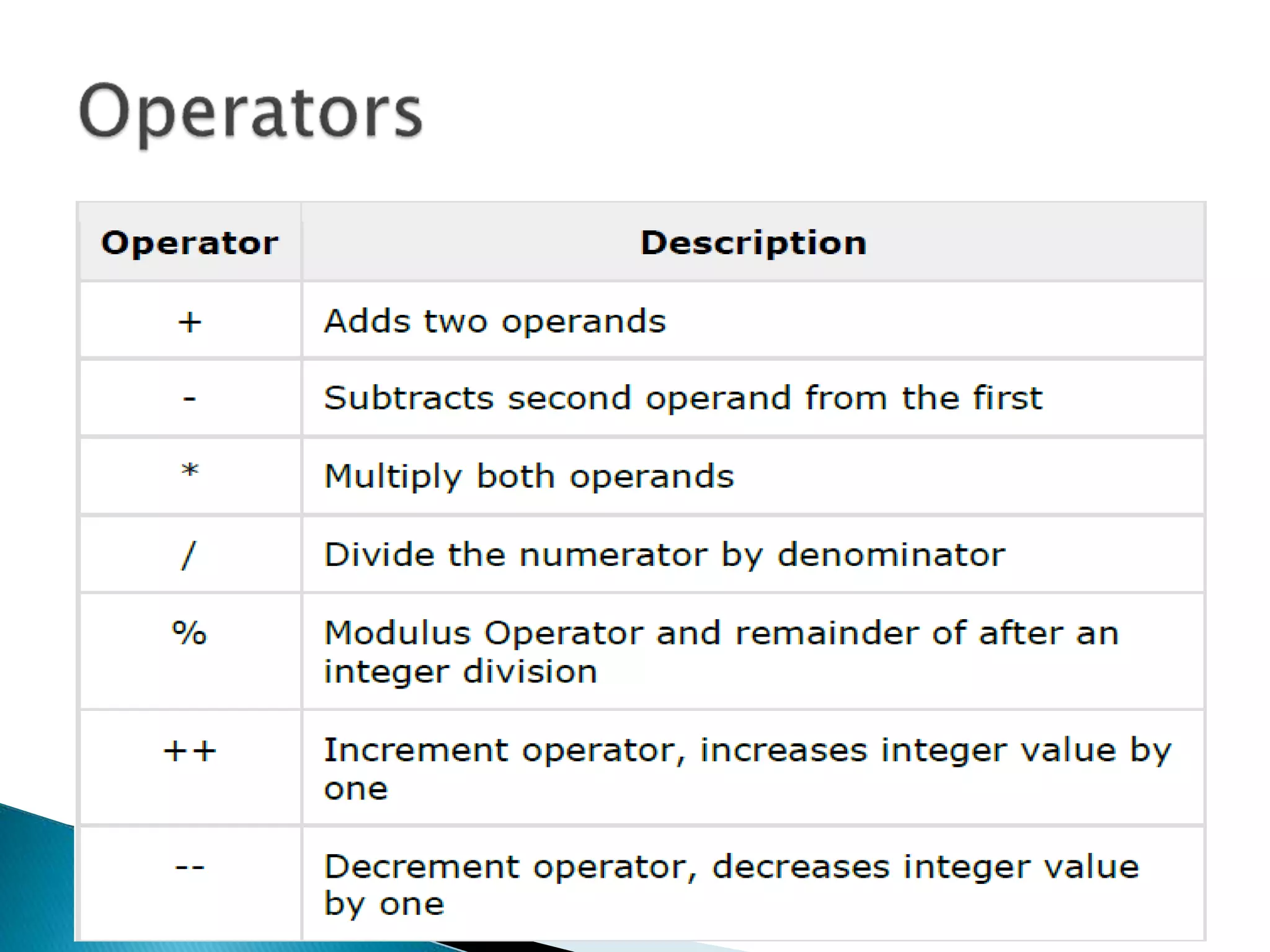

![<?php $cars = array("Volvo", "BMW", "Toyota"); echo "I like " . $cars[0] . ", " . $cars[1] . " and " . $cars[2] . "."; ?>](https://image.slidesharecdn.com/php-220311034600/75/Php-9-2048.jpg)
